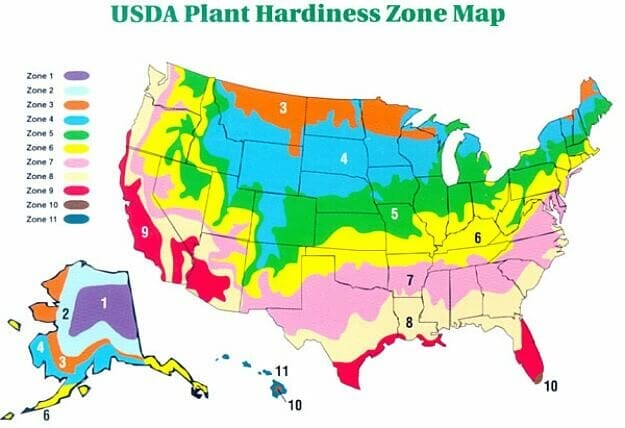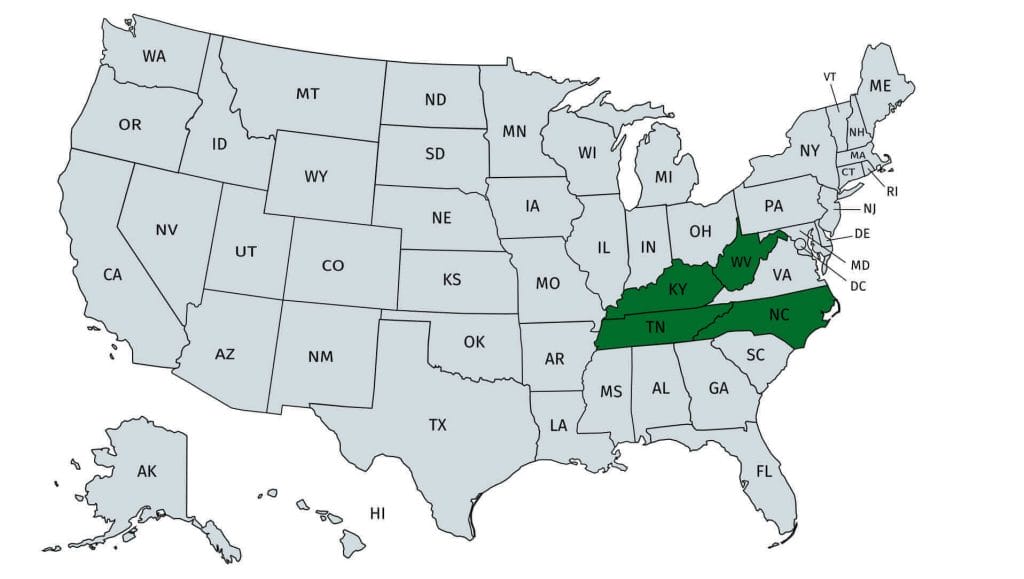Where To Live?
Truthfully? I have no idea.
I wrote a post on why I want to live off the grid. But there are so many questions about where to live.
I’ve made a list of some of the states that I’d like to look at and have heard they’re good places to live off the grid.
There are several characteristics that I want in a place to live.
Vegetation
The area needs to be wooded. Preferably with a mix of deciduous and evergreen trees of some size.
I like greenery.
Don’t get me wrong; many beautiful places don’t have trees or only evergreen trees. But after a while, I miss seeing a variety of plants, and it’s so nice being able to get under the canopy of leaves in the summer, enjoy the color of autumn, and the openness of the forest in the spring when you crave the sunshine the most.
Water
I grew up in Central New York State, which receives between 35- and 45 inches of precipitation yearly.
The precipitation frequently comes, not that we don’t have to water the garden at times, but for most of the growing season, the rainfall is timely.
Besides the abundant precipitation, the region has large bodies of water (Lake Ontario), many smaller lakes, and numerous flowing streams, creeks, rivers, and groundwater is relatively shallow.
No way in Hell do I want to live in a place where I need to conserve water.
I don’t want it to rain every day, either. Rain is refreshing; it keeps plants green and growing, but it cuts down on solar radiation, and it can beat you down and be depressing.
Topography
To me, the best power source for an off-the-grid home would be a micro-hydro turbine. So I’ll need some elevation changes on the property.
The greater the elevation change, the better, but incorporating the benefit of geothermal for cooling and heating would also be nice.
Not wanting to invest a shit ton of money drilling wells into the rock for geothermal means the property will need several feet of unconsolidated soil, leaving mountainous, rocky areas out of the equation.
My eyes enjoy looking at hilly terrain, so my ideal place will have some elevation change but at least a bit of level ground to make building and gardening easier.
Temperature
I grew up in an area that receives lake-effect snow. Snow doesn’t bother me, but I’m sick of it. I doubt I will miss it, but I also know that it will be hard to find a place to live that doesn’t receive some snow.
Heating a home takes a lot of resources, whether it be wood, electricity, or propane. So the longer the outside temperature stays warm, the better.
A longer growing season would also be beneficial and ideal!
So temperature is a major factor for me. A good way to determine the climate of an area would be to look at the average minimum temperature.
Luckily, the government has mapped out the minimum winter temperature. The U.S. plant hardiness zone map is a good way to figure out how cold it gets anywhere in the U.S.
Central New York is located within three hardiness zones from 4 to 6. I currently live in zone 5.
Residing in a warmer area, such as in zone 6 or 7, would be nice. I also realize that regional plant hardiness zones are generalizations, and each area could have several micro-climates, but it’s a good place to start. More on this later in the post.
Laws & Taxes
I want to build and live the way I want.
Also, it might not be possible to build quickly, so I may have to live in a smaller build or travel trailer until the finished building is complete.
This means I may need to find a place that does not enforce the codes or, better yet, find a place that has little or no building codes or zoning.
I’ve read that some areas discourage off-the-grid living by using tough building codes or zoning. After all, the municipality relies on tax dollars to fund its treasury, so smaller homes that don’t depend on the system won’t contribute as much and are unwelcome.
Other laws, such as water usage regulations, could also affect my preferred energy collection system.
One of the main reasons I want to live off the grid is to reduce bills. Getting a massive tax bill in the mail is not a good day and one I want to eliminate.
Land Price
Obviously, money is a huge factor.
The cheaper an acre of land is, the more land I can buy. Of course, the natural resources and the land’s topography are determining factors, but all things being equal, the larger the piece of land, the better.
The budget is limited, and the less I spend on land, the quicker I can develop the property.
States in the Running
Below is a list of states that I’ve heard could be good candidates for off-the-grid living, or I know they have the resources that I want to have on my property.
- Tennessee
- Oregon
- Washington
- Idaho
- West Virginia
- North Carolina
- Arkansas
- Colorado
- Maine
- Vermont
- New York
- New Hampshire
- Kentucky
- Missouri
- Alaska
Can Any Be Eliminated?
I’m not sure I want to permanently eliminate any state from the list. But let’s face it, owning a title to the land is one of the first steps I need to take.
Searching for land in 15 states at once is, well, stupid.
I’ll use the characteristics listed at the beginning of the post to see if one or two states might be better candidates over the others.
The United States Department of Agriculture (USDA) Plant Hardiness Zone Map represents the average annual minimum winter temperatures based on 10-degree zones.
The map covers all of the U.S. .and will be a good tool to cull out some states or at least eliminate areas of some states. It can also be used to choose areas I may prefer to live in based on temperature and length of the growing season.
Plant Zones
As previously mentioned, any state that doesn’t have a hardiness zone warmer than zone 5 can be crossed off the list. States with wholly or mostly in zones 6 or 7 will be highlighted.

Pass or Fail?
Comparing the state list to the plant hardiness zone map, Colorado, New Hampshire, Vermont, and Maine can be crossed off because they are in Zone 5 or colder. New York can also be crossed off because the counties within Zone 6 are not areas where I want to live.
Below is the state list with those currently not in the running struck out and those in the ideal temperature range highlighted in green. The others have limited areas within a good temperature zone.
- Tennessee
- Oregon
- Washington
- Idaho
- West Virginia
- North Carolina
- Arkansas
- Colorado
- Maine
- Vermont
- New York
- New Hampshire
- Kentucky
- Missouri
- Alaska
In future posts, I will take a closer look at the other characteristics of the remaining states in more detail.
Where Do You Live? How Do You Like It There?
Please send me an email at [email protected] and let me know.
Please share this post with your friends on social media. If you have Pinterest Boards, pin the image below on your boards.



